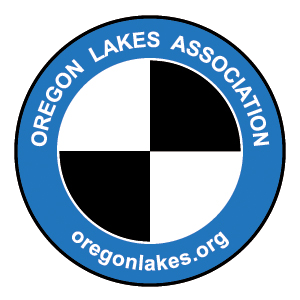| Oregon Lakes Association ....a voice for quiet waters. |
|
2022 Bloom season Recap & Outlook for 20230:00:00 Theo Dreher, Oregon State University & OLA President Introduction/Welcome SLIDES 0:09:40 Gregg Baird, OHA, Cyanotoxin monitoring requirements for public drinking water supply systems in Oregon SLIDES 0:44:40 Curtis Cude, OHA, 2022 CyanoHABs recreational exposure review, 2023 program and pilot project updates **** no slides **** 1:09:40 Rochelle Labiosa, US-EPA Seattle office, US-EPA and support for CyanoHABs SLIDES 1:37:00 Al Johnson, US Forest Service, Forest Service HAB Monitoring SLIDES 1:56:55 Sarah Burnet (US Army Corps of Engineers) Corps HAB Monitoring & research SLIDES 2:10:40 Nathan Reetz, DEQ 2022 DEQ HABs Activities: Program Review and Going Forward SLIDES 2:33:50 Dan Sobota, DEQ Updated ODEQ CyanoHAB strategy, incl. weekly reports SLIDES What CyanoHAB research or monitoring is going on in Oregon?2:56:00 Dan Sobota, DEQ Welcome remarks 2:57:55 Stuart Dyer, DEQ “Gas Vesicles: The structural properties, ecophysiological function, and in vivo detection of a proteinaceous 3:19:50 Desiree Tullos, Oregon State University “Not a lake and not a river: Update on Ross Island Lagoon HAB solutions research” SLIDES 3:43:30 Theo Dreher, Oregon State University “Woronichinia and Limnoraphis are lesser known, yet quite widespread, components 4:01:05 Laurel Genzoli, University of Montana "Widespread anatoxin detected from attached cyanobacteria in the Klamath River 4:40:50 David Waltz, DEQ “Identifying HABs and associated water quality impairments for coastal waterbodies using DEQ’s 5:04:00 Kurt Carpenter, USGS “Cyanotoxins and hyperspectral periphyton study” SLIDES 5:27:55 Kale Clauson, DEQ “Cyanotoxins below the HAL: Validating higher sensitivity ELISA for drinking water in Oregon” SLIDES |

